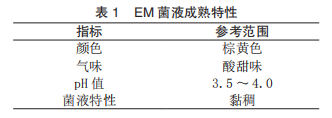Effect of EM bacteria on ammonia nitrogen in aquaculture
- Categories:Technical article
- Author:JBH BIO
- Origin:Henan Jinbaihe Biotechnology Co.,LTD
- Time of issue:2023-02-08 14:12
- Views:
Effect of EM bacteria on ammonia nitrogen in aquaculture
- Categories:Technical article
- Author:JBH BIO
- Origin:Henan Jinbaihe Biotechnology Co.,LTD
- Time of issue:2023-02-08 14:12
- Views:
Ammonia nitrogen is one of the common problems in aquaculture. Especially in recent years, with the continuous development of aquaculture industry, high-density intensive aquaculture is becoming more and more common, and the problem of ammonia nitrogen exceeding the standard is becoming increasingly serious, which brings great harm to aquaculture production.
If you want to solve the ammonia problem, you need to know what is ammonia?
Nitrogen in water mainly exists in the form of organic nitrogen, free ammonia, ionic ammonium, nitrogen, nitrite, nitrate and so on.
The nitrogen elements that can be used by plants in water are mainly NH4+, NH2- and NO3-.However, the combined nitrogen in the form of free ammonia and ionic ammonium is called ammonia nitrogen. The main harmful effect is free ammonia, which is dozens of times more toxic than ammonium salt, and increases with the increase of water alkalinity.
The content of non-ionic ammonia nitrogen is not more than 0.02mg/L according to the standard of Fishery Water Quality, but it is often difficult to achieve in practice. In the actual production process of most aquaculture, ammonia nitrogen is controlled to be less than 0.5mg/L. Excessive ammonia nitrogen will cause aquatic animal poisoning. The main manifestations were decreased feeding, slow growth, tissue damage, hypoxia, hyperactivity, convulsion and death. The ammonia-nitrogen problem is more prominent in the cultivation of Penaeus vannamei. Most farmers generally do not pay attention to the ammonia-nitrogen index before releasing seedlings, which has a great impact on the cultivation of the seedling stage.
In general, the sources of ammonia nitrogen in water are mainly aquatic animal excreta, residual bait decomposed by microorganisms, feces, animal and plant remains, etc. Fish, shrimp and crabs need to carry out ion exchange when living in water. Ammonia nitrogen will affect the permeability of gill filaments and the process of ion exchange, so that aquatic animals are in a state of long-term stress. When the ammoniacal nitrogen exceeds the limit, it is easy to grow slowly, moult failure, black gill and so on.
Aquatic EM bacteria put into aquaculture water, on the one hand, can reproduce in a large number of dominant bacteria in a short time, can inhibit or kill the pathogenic microorganisms in the water.
On the other hand, depending on the synergistic interaction and proliferation relationship among various microorganisms, it forms an efficient microbial flora with stable structure, complex composition and no side effects, which can degrade ammonia nitrogen and promote the proliferation of beneficial algae. At the same time, EM bacteria can also make anaerobic microorganisms in the decomposition of organic matter produced harmful substances into beneficial substances, organic matter, harmful gas, carbon dioxide, ammonia as the matrix, synthesis of a large number of sugars, amino acids, vitamins beneficial substances, to avoid the aquaculture water shrimp by harmful substances toxic effect. Aquatic EM bacteria also have a buffering effect on the pH value of water, avoid the harm of pH value upheaval and shrimp, and enhance the ability of emergency response and tolerance of shrimp.
14L/ ha was sprinkled 3 days before inoculation and 12L/ ha every half month after inoculation. After one month of incubation, 15LEM was used in the experimental group and not in the control group. Water samples were taken at 1D, 3D, 5d, 7d, 9d, 11d and 13d after spraying.

Characterization of EM bacteria solution

Effect of EM bacteria on ammonia and nitrogen in shrimp pond water quality
According to the experimental data, the ammonia nitrogen content of the control group gradually increased with the increase of days, and the ammonia nitrogen content of the treatment group was the lowest on the 7th day, and gradually increased with the increase of days after the 9th day.
The ammonia nitrogen content of the treatment group was maintained at the same level on the first day, and there were significant differences between the treatment group and the control group on the third, fifth, ninth, 11th and 13th days (P < 0.05). On the 7th day, the difference was extremely significant (P < 0.01).
These results indicated that the ammonia nitrogen content of shrimp pond could be reduced after spraying EM bacteria , but the maintenance period was 7 days.
Therefore, in the actual breeding production, it is recommended that the frequency of EM bacteria use should not exceed 7 days. In the peak period of breeding, it is recommended to use EM bacteria once every 3-5 days.
Service Hotline:
Tel:+86-371-61779068
Phone:+86-18602468822
WhatsApp:+86-15717345927
Skype: +86-18639087551
Email:melody@jbh2013.com
Add: Fudao Town, tangyin county, Anyang City, Henan Province
Copyright © 2020 Henan JBH Bio-Tech Co., Ltd 豫ICP备15035929号 Business License Powered by : www.300.cn SupportedIPV6

